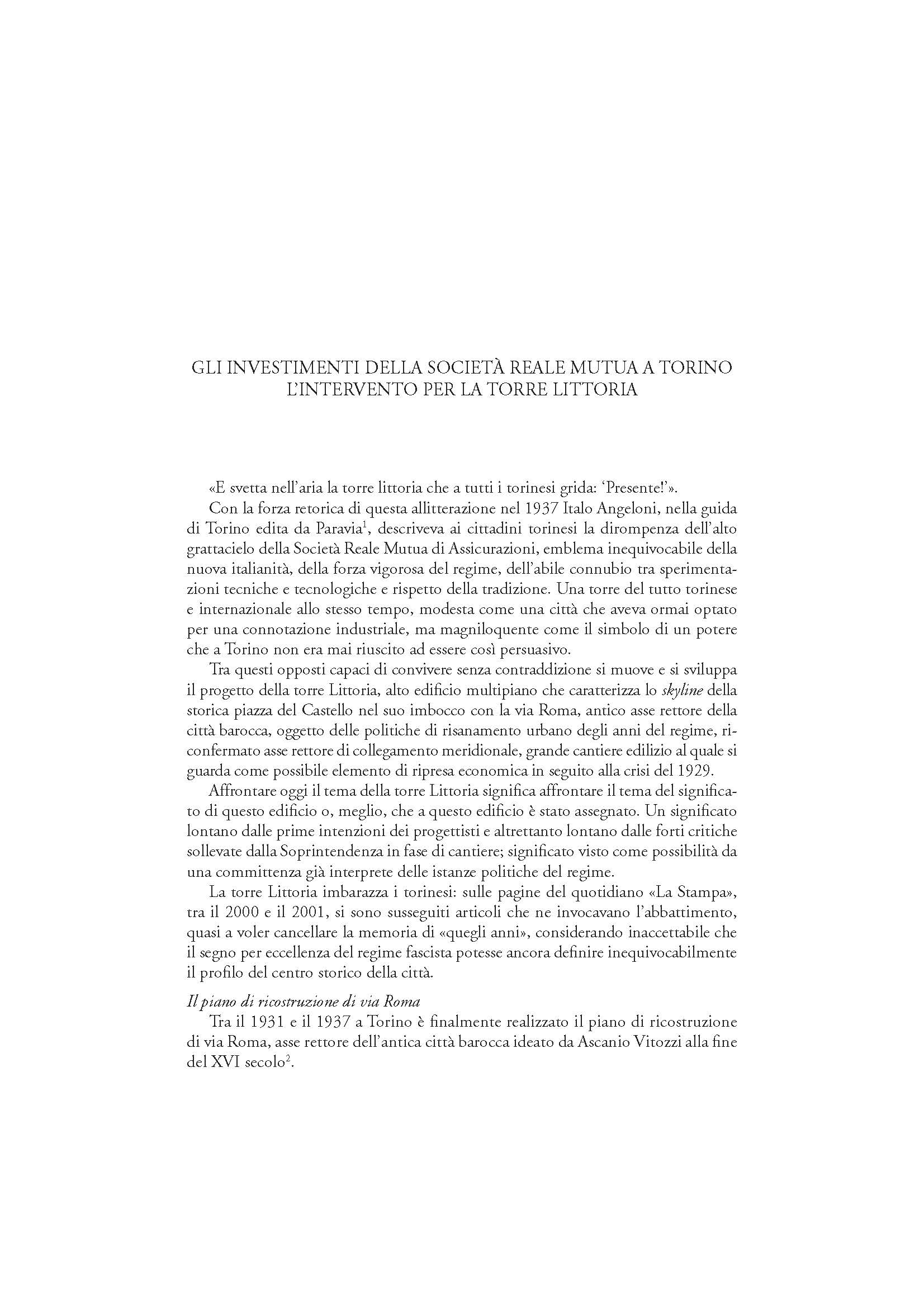Gli investimenti della società Reale Mutua a Torino. L’intervento per la Torre Littoria
6,00 €
The tall, multi-fl oored building rising in the historic «Piazza del Castello» is now an integral part of the city skyline. The «Torre Littoria», built in the 1930’s by the architect Armando Melis and the engineer Ciovanni Bernocco is considered an historic symbol of the regime, memento of years of confl ict that were also especially signifi cant for the shaping of Turin’s present image. The study of this «fragment», a part of the urban reform programs for the historic center during the Regime years, makes it possible to outline the coordinates of a discussion on the city, on those architectural symbols tied to the regime, on the importance of the planned and built space. In particular, the building belonging to the «Societa Reale Mutua di Assicurazioni» must be seen within the logic that brought about the reconstruction of «Via Roma», an undertaking which was carried out only thanks to the great fi nancial investment in public works that followed the crisis of 1929. The article proposes to review the steps of the debate that resulted in construction of the building as the result of the attempt to reconcile a plurality of at times contradictory requests, also highlighting the inspiration in Melis and Bernocco’s design and their relationship with the historic context in which they worked.
The tall, multi-fl oored building rising in the historic «Piazza del Castello» is now an integral part of the city skyline. The «Torre Littoria», built in the 1930’s by the architect Armando Melis and the engineer Ciovanni Bernocco is considered an historic symbol of the regime, memento of years of confl ict that were also especially signifi cant for the shaping of Turin’s present image. The study of this «fragment», a part of the urban reform programs for the historic center during the Regime years, makes it possible to outline the coordinates of a discussion on the city, on those architectural symbols tied to the regime, on the importance of the planned and built space. In particular, the building belonging to the «Societa Reale Mutua di Assicurazioni» must be seen within the logic that brought about the reconstruction of «Via Roma», an undertaking which was carried out only thanks to the great fi nancial investment in public works that followed the crisis of 1929. The article proposes to review the steps of the debate that resulted in construction of the building as the result of the attempt to reconcile a plurality of at times contradictory requests, also highlighting the inspiration in Melis and Bernocco’s design and their relationship with the historic context in which they worked.

